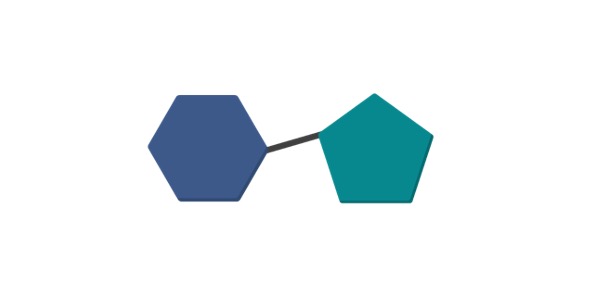Table of Contents
What are Carbohydrates?
Carbohydrates are carbon, oxygen, and hydrogen-based macromolecules. Cn (H2O) n is the generic formula for carbohydrates. Sugars or saccharides are the popular names for them. Carbohydrates serve a spread of functions in living organisms. They serve as an energy source and aid in energy transit in animals. They also serve as structural elements in plants and insects.
Carbohydrates Types
Monosaccharides, disaccharides, oligosaccharides, and polysaccharides are the four kinds of carbohydrates. Growth, development, fertilization, blood coagulation, and immunity are all aided by saccharides and their derivatives. Carbohydrates are stored in a cell as glycogen. Carbohydrates are covered in this course in terms of their kinds, features, examples, and applications.
i. Monosaccharides
Monosaccharides have three to seven carbon atoms and are the most basic type of carbohydrates. With two or more hydroxyl groups, they are aldehydes (aldose) or ketones (ketose).
Monosaccharides Characteristics: Monosaccharides can’t be broken down or hydrolyzed into smaller pieces. They have optical activity because they can rotate light in a clockwise or anticlockwise manner (D or dextro) (L or laevo). These two forms are referred to as isomers, and they appear to be mirror reflections of one another. Monosaccharides are often found during a sort of forms.
Monosaccharides Examples: Glucose, fructose, galactose, xylose, and ribose are samples of monosaccharides.
Glucose: A cell’s primary source of energy is glucose. The term “blood sugar” refers to the presence of glucose within the blood.
Fructose: Fructose is usually found in fruits and vegetables.
Galactose: Galactose may be a sugar found in milk and other dairy products.
Xylose: Xylose is a five-carbon aldopentose monosaccharide that is also employed as a diagnostic agent in veterinary medicine to evaluate malabsorption.
Ribose: Ribose is a pentose sugar that the body produces. It’s a type of medication. Monosaccharides such as glucose and fructose are the most prevalent.
Carbohydrates and Glycosidic Bond
The condensation process between a sugar and the -OH group of a second molecule, which may or may not be the sugar, forms a glycosidic link. There are two sorts of glycosidic bonds: O- glycosidic bond (-C-0- C) and N- glycosidic bond (-C-0- C) (-C-N-C).
ii. Disaccharides
Disaccharides are produced when two monosaccharide units join by dehydration synthesis, which removes a tiny molecule from the functional groups, such as water.
Disaccharides Examples: Disaccharides are a kind of sugar that is made up of two or more sugar. Lactose (glucose + galactose), sucrose (glucose + fructose), and maltose (glucose + glucose) are examples of disaccharides.
Lactose: Lactose is that the primary sugar found in milk and dairy products.
Sucrose: It’s also referred to as “table sugar.” It’s a kind of sugar that may be found in sugarcane, certain fruits and vegetables, as well as cereal, ice cream, baked sweets, and yoghurt.
Maltose: Maltose is also known as “malt sugar” and is made up of two glucose molecules. It may be found in cereals containing barley as well as malt beverages like malted milkshakes and beer.
Lactose Intolerance: Lactose intolerance is a digestive disorder in which patients experience bloating, diarrhea, and gas after consuming milk or milk products. Lactose intolerance are often caused by lactose intolerance or lactose malabsorption. Lactose intolerance isn’t an equivalent as milk allergy. The latter is a result of the immune system’s response to one or more milk proteins. A severe allergic response to milk might be fatal. Lactose intolerance is more frequent in adolescence or adulthood, whereas milk allergy is more common in the first year of life.
iii. Oligosaccharides
Three to ten monosaccharide units make up oligosaccharides. They give out monosaccharide units when hydrolyzed, which might be identical or different. Oligosaccharides include C18H32O16 trisaccharide’s such as Raffinose, maltotriose, and stachyose (tetra saccharides).
iv. Polysaccharides
Polysaccharides are made up of more than 10 monosaccharide units that are linked together by glycosidic linkages to form a chain-like structure. The chain might be
- Branched, with molecules that resemble branches.
- Non-branched, in which the molecules are arranged in a straight line
These are generally amorphous, tasteless, sugar-free, and water insoluble.
Polysaccharide Examples: Polysaccharides can take the form of structural (cellulose, hemicellulose, pectic compounds, chitin, gum, mucilage, etc.) or storage (starch, inulin, glycogen, etc.) polysaccharides.
Glycogen: Humans and animals both store glycogen in their livers and muscles.
Starch: These are glucose polymers made up of amylose and amylopectin, which are made up of amylose and amylopectin.
Cellulose: Cellulose is the most common organic molecule on the planet and one of the most important structural components of plants. The majority of cellulose is found in wood, paper, and cotton.
Carbohydrates Applications
Oligosaccharides and polysaccharides are crucial in a number of cell signaling pathways in addition to their functions in energy storage and cell structure development. For example, oligosaccharides are commonly associated with proteins and act as indicators for transporting proteins to the cell surface or incorporating them into various subcellular compartments.
They also serve as cell surface indicators, with essential functions in cell identification and cell-cell interactions in multicellular organisms’ tissues. Carbohydrates provide the body with energy.
Glucose is a simple sugar that may be found in a variety of everyday meals. During the process of cellular respiration, glucose is broken down for immediate energy, resulting in the production of ATP, the cell’s energy currency.
Monosaccharides are simple sugars with three to seven carbon atoms which will be found in either a linear chain or a ring-shaped molecule. When two monosaccharides are bound together by a covalent connection, a disaccharide is produced.
The most prevalent disaccharide is sucrose (table sugar), which is formed from the monomer’s glucose and fructose. Fructose, on the other hand, is made up of a single unit of glucose and galactose.
A polysaccharide could also be an extended chain of monosaccharides joined together by glycosidic linkages; the chain are often branched or unbranched, and it can comprise a selection of monosaccharides. Lactose intolerance is a disorder that causes digestive difficulties in people who consume milk or eat milk products.







